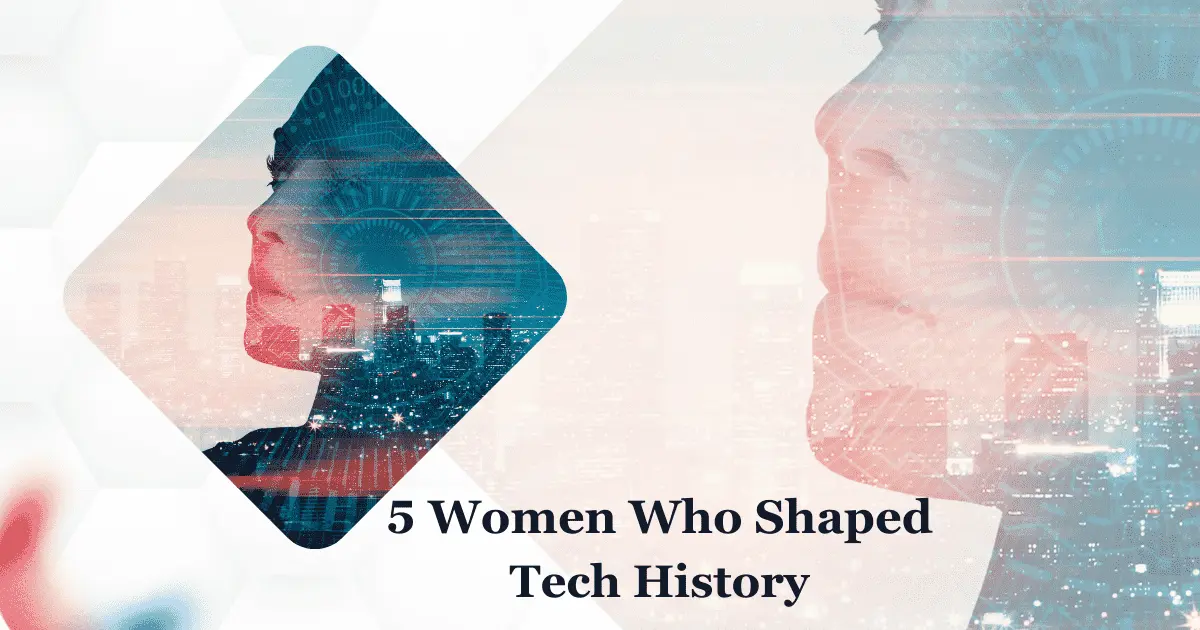
We live in an era where technology influences almost every aspect of our daily lives. This leap in technological advancement wouldn’t have been possible without the significant contributions of many individuals, among whom are several remarkable women. The history of tech is teeming with stories of women who dared to break the barriers, redefining societal norms and shaping the future of technology. This post will spotlight five women whose groundbreaking contributions have left an indelible mark on tech history.
Ada Lovelace is considered the world’s first computer programmer, despite living in the 19th century. Lovelace worked with Charles Babbage, a mathematician and inventor often referred to as the “father of the computer.”
One of Lovelace’s most notable contributions to the tech industry was her work on Babbage’s “Analytical Engine,” a proposed mechanical general-purpose computer. Lovelace wrote the first algorithm intended for implementation on a machine, which would have allowed the Analytical Engine to calculate Bernoulli numbers. This work has been recognized as a precursor to modern programming.
Lovelace also envisioned the potential for computers to do more than just crunch numbers. She recognized the potential for computers to create music and graphics and perform calculations. Lovelace’s vision for the possibilities of computing was truly ahead of its time and has helped inspire generations of women to pursue careers in technology.
Grace Hopper was a computer scientist and Navy rear admiral who is credited with many significant contributions to the field of computer programming. She was known as the “Godmother of Cobol.”
One of Hopper’s most notable accomplishments was the development of the first compiler, a program that translates code written in one programming language into another. This breakthrough in computer programming made it easier for programmers to write and debug code, revolutionizing the industry.
Hopper was also instrumental in developing the first commercially successful UNIVAC computer. She worked on the team that designed the computer and helped write the software that ran on it.
Hopper was also responsible for developing the COBOL programming language, which is still used today in many financial and government systems. Throughout her career, Hopper worked tirelessly to promote the idea that computer programming should be accessible to all.
She is known for her famous quote, “The most damaging phrase in the language is ‘We’ve always done it this way.'”
Hopper’s dedication to innovation and inclusivity has had a lasting impact on the tech industry, making her one of the most influential women in the field.
Betty Jennings, also known as Jean Jennings Bartik, was one of the first women computer programmers. She was enlisted during World War II to contribute to the development of the Electronic Numerical Integrator and Computer (ENIAC), recognized as the inaugural general-purpose electronic computer.
Bartik was one of the six women recruited to work on the ENIAC project during World War II. She was responsible for programming the complex machine to calculate ballistic trajectories for the US Army. Bartik and her colleagues wrote machine code for the ENIAC without the use of programming languages or software tools, a monumental task that required a deep understanding of the machine’s architecture.
After the success of the ENIAC project, Bartik continued to work in the field of computing. She played a vital role in developing the UNIVAC, the first commercially available computer. Bartik also helped to establish the Association for Computing Machinery, a professional organization for computer scientists.
Bartik’s contributions to the field of computing helped pave the way for future generations of women in tech. She was posthumously awarded the Computer Pioneer Award by the IEEE Computer Society in 2018, recognizing her groundbreaking work in the field.
Hedy Lamarr was not just a popular Hollywood actress; she was also an innovative inventor. Lamarr co-developed a frequency-hopping spread-spectrum technology intended to be used for secure communication during World War II. The technology involved rapidly switching radio signals between different frequencies, making it difficult for enemies to intercept and decode messages. Although their invention was not immediately implemented during the war, the technology was later used to develop modern-day wireless technologies such as Bluetooth and Wi-Fi.
Lamarr’s work as an inventor was often overshadowed by her career as an actress. However, she was a brilliant mind with a keen interest in science and technology. Her invention demonstrated her commitment to using her knowledge and skills to improve the world.
In recognition of her contributions to the field of wireless communications, Lamarr was posthumously inducted into the National Inventors Hall of Fame in 2014. She inspires women in both the entertainment and technology industries, proving that it is possible to excel in multiple fields.
Radia Perlman, a network engineer, is the brain behind the Spanning Tree Protocol (STP), an innovation that made the modern internet possible. Her design allows data packets to find their way around the network, even if a part of the network fails.
Perlman’s contribution to networking infrastructure is often underappreciated. However, her innovative work forms the backbone of our digital communication, rightly earning her the title ‘Mother of the Internet’.
The tech industry owes much to Ada Lovelace, Grace Hopper, Hedy Lamarr, Betty Jennings, and Radia Perlman. These trailblazing women, through their innovation, resilience, and groundbreaking contributions, shaped the way we interact with technology today and laid the foundation for the digital age.
As we embrace and forge ahead into a future increasingly dependent on technology, let’s not forget these incredible women. Their revolutionary contributions continue to inspire, and their stories highlight the importance of women’s representation and involvement in STEM fields.